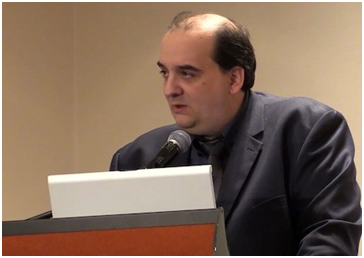
The sensitization of the public to paint vaping as being dangerous has been strongly disapproved by Doctor Farsalinos who believed that the real scientific facts have been altered and could hence, misinform the would-be ex-smokers. News reported that a political party in Iceland is strongly moving the motion of “treating vaping like cigarette smoking” and this has been a major setback to the initial success recorded of smokers switching to vaping. The Forum of International Respiratory societies has also called for firm regulation of the European market so as to restrict the use of E-cigs in one of their recent reports.
Farsalinos humor during a meeting when he said “E-cigs have been reported clinically and biologically to be highly dangerous for the health of users as it has been proven to be linked with a case of chronic obstructive lung disease (COPD) and Laryngeal cancer” was widely misinterpreted by many.

He later rephrased his erroneous COPD study report saying “A smoker developed serious medical conditions long BEFORE he switched to vaping” The cross-sectional study was wrongly interpreted.
The ludicrous study buttressed his initial motion “Smokers needs to be properly informed about a range of available options to subscribe to and be guided on the appropriate measure to quit smoking. But harm reduction products should also be allowed.
The Reykjavik Grapevine reported that “The increase in the use of E-cigs in Iceland has led to a 50% reduction in cigarette sales between 2008 and 2017 causing a decline in the high smoking rate initially recorded in the past few years.”
Recently, a parliamentary bill was put forward by the Former Minister of Health, Ottarr Proppe, placing a similar tax on tobacco cigarettes to vaping products in an attempt to discourage the act of vaping.
But a strong opposition to the bill which was pioneered by the Pirate Party has caused the Independent vape retail sector to see the black market as a potential threat to their overall sales margin.
These British vapers are not aware of this controversy that still poses a challenge to E-cig users in Iceland because, in other parts of the world like San Francisco, the use of flavors has been banned. They believe that we have gained absolute freedom to use harm reduction products.

There is a perception that “the younger generation including the teenagers and children are finding the use of electronic cigarettes appealing due to the product design, marketing, flavors and overall safety and acceptability. Much evidence is available to show that most young users of Ecigs end up smoking and getting addicted to nicotine, so the idea of harm reduction has failed in this regards.” This was published in the European respiratory journal by the Forum of International Respiratory societies.
So the motion of “banning Ecigs with flavors and ensuring viewership discretion during advert placements of vaping products to disallow use by youths and young adults” was proposed, hiding under the child protection agenda.
This idea was partially supported by the UK vaping Industry Association in their words “We agree to prohibit underaged teenagers from accessing vaping products but the idea of banning flavors would only encourage 7million smokers, who are already addicted to flavored cigarettes, to stick to their favorite brand.
I did not respond initially when they cited San Franciscans as an example because all I care about is my nativity.
